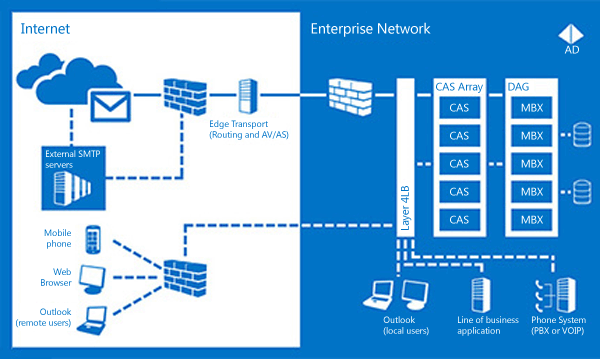
Tiêu chuẩn hãng
Oracle Database 11g: Administration Workshop II
Course Description:
In this course, the concepts and architecture that support backup and recovery, along with the steps of how to carry it out in various ways and situations, are covered in detail. This includes how to define and test your own backup and recovery scenarios. Also, the students learn to manage memory effectively and to perform some performance evaluation and tuning tasks, including using some of the advisors. All types of flashback technologies, scheduling jobs inside and outside of the database, and controlling system resource usage are covered. Topics are reinforced with hands-on practices.
Course Length: 40 hours
Who Should Attend:
This course is for Database Administrators, Support Engineers, Data Warehouse Administrators, and Technical Consultants.
Benefits of Attendance:
Upon completion of this course, students will be able to:
- Back up and recover a database
- Configure Oracle Database for optimal recovery
- Administer ASM disk groups
- Use an RMAN backup to duplicate a database
- Automating Tasks with the Scheduler
Prerequisites:
Students should have taken Oracle Database 11g: Administration Workshop I.
Course Outline:
Database Architecture and ASM
- Oracle Database Architecture Overview
- ASM General Architecture
- Creating an ASM Instance
- Using Enterprise Manager to Manage ASM Users
- ASM Storage Concepts
- The ASMCMD Utility
- ASM Scalability and Performance
Configuring for Recoverability
- Purpose of Backup and Recovery Functionality
- Typical Backup and Recovery Tasks
- Oracle Backup and Recovery Solutions
- Using Recovery Manager (RMAN)
- Using a Flash Recovery Area
- Flash Recovery Area Space Management
Using the RMAN Recovery Catalog
- RMAN Repository Data Storage: Comparison of Options
- Storing Information in the Recovery Catalog
- Registering a Database in the Recovery Catalog
- Recovery Catalog Resynchronization: Concepts
- Using RMAN Stored Scripts
- Backing Up and Recovering the Recovery Catalog
- Using a Virtual Private Catalog
Configuring Backup Specifications
- Using RMAN to Create Backups
- Configuring Persistent Settings for RMAN
- Using Enterprise Manager to Configure RMAN Settings
- Control File Auto-backups
- Managing Persistent Settings
- Configuring Devices for Backup
- Configuring and Allocating Channels for Use in Backups
- Configuring Backup Optimization
Creating Backups
- Creating an Oracle-Suggested Backup
- Creating Backup Sets & Image Copies
- Creating a Whole Database Backup
- RMAN Backup Types
- Monitoring Block Change Tracking
- Creating Duplex Backup Sets
- Archival Backups: Concepts
- Encrypting Backups
Performing User-Managed Backup and Recovery
- Restoring and Recovering
- Causes of File Loss
- Critical Versus Non-critical
- Recovering from a TEMPFILE Loss
- Re-creating Indexes
- Recovering from a Lost Index Tablespace
- Authentication Methods for Database Administrators
- Recovering a Read-Only Tablespace
Using RMAN to Perform Recovery
- Using RMAN RESTORE and RECOVER Commands
- Performing Recovery Using Enterprise Manager
- Recovery Using Incrementally Updated Backups
- Perform a Fast Switch to Image Copies
- Restoring and Recovering the Database on a New Host
- Performing Disaster Recovery
Using RMAN to Duplicate a Database
- Using RMAN to Create a Duplicate Database
- Creating a Duplicate Database
- Creating an Initialization Parameter File for the Auxiliary Instance
- Allocating Auxiliary Channels
- Understanding the RMAN Duplication Operation
- Using EM to Clone a Database
- Cloning a Running Database
Performing Tablespace Point-in-time Recovery
- Tablespace Point-in-Time Recovery (TSPITR) Concepts
- Tablespace Point-in-Time Recovery: Architecture
- Understanding When to Use TSPITR
- Determining the Tablespaces for the Recovery Set
- Using Enterprise Manager to Perform TSPITR
- Understanding TSPITR Processing
- Troubleshooting RMAN TSPITR
Monitoring and Tuning RMAN
- Parallelization of Backup Sets
- Monitoring RMAN Sessions
- Interpreting RMAN Message Output
- Using the DEBUG Option
- Tuning RMAN
- RMAN Multiplexing
- Comparing Synchronous and Asynchronous I/O
- Tape Subsystem Performance Rules
Using Flashback Technology
- Flashback Technology
- Transactions and Undo
- Guaranteeing Undo Retention
- Preparing Your Database for Flashback
- Flashback Drop and the Recycle Bin
- Using Flashback Technology to Query Data
- Possible Workflow
- Flashback Transaction Wizard
Using Flashback Database
- Flashback Table
- Enabling Row Movement on a Table
- Enabling Row Movement on a Table
- Flashback Database Architecture
- Configuring Flashback Database
- Performing Flashback Database Using EM
- Flashback Database Considerations
- Flashback Data Archive
Diagnosing the Database
- Automatic Diagnostic Workflow & Repository
- Location for Diagnostic Traces
- Viewing the Alert Log Using Enterprise Manager
- The Support Workbench and Oracle Configuration Manager
- Create a Service Request
- Package and upload diagnostic data to Oracle Support
- Incident Packaging Configuration
- Health Monitor Overview & Data Recovery Advisor
Managing Memory
- Oracle Memory Structures
- Automatic Memory Management Overview
- Oracle Database Memory Parameters
- Auto Memory Parameter Dependency
- Automatic Shared Memory Management: Overview
- Automatic PGA Memory Management
- Using the Memory Advisor to Size the SGA
- Memory Tuning Guidelines for the Library Cache
Managing Database Performance
- Tuning Activities
- Performance Planning & Performance Tuning Methodology
- Instance Tuning
- Troubleshooting and Tuning Views
- Automatic Workload Repository
- SQL Tuning & SQL Advisors
- Using the SQL Tuning Advisor
- SQL Access Advisor: Overview
Using the Segment Advisor
- Space Management: Overview
- Proactive Tablespace Monitoring
- Thresholds and Resolving Space Problems
- Monitoring Tablespace Space Usage
- Shrinking Segments
- Space Reclamation with ASSM
- Automatic Segment Advisor
- Minimum Compatibility Level
Managing Resources
- Database Resource Manager: Overview
- Database Resource Manager Concepts
- Accessing Resource Plans
- Default Maintenance Resource Manager Plan
- Creating Consumer Groups
- Resource Allocation Methods for Resource Plans
- Resource Allocation Methods for Resource Plans
- Monitoring the Resource Manager
Automating Tasks with the Scheduler
- Simplifying Management Tasks
- Key Components and Steps
- Creating an Event-Based Schedule
- Creating Complex Schedules
- Creating Job Chains
- Creating Job Chains
Administering the Scheduler
- Advanced Scheduler Concepts
- Job Classes
- Windows
- Prioritizing Jobs Within a Window
- Remote Jobs
- Installing the Scheduler Agent
- Dictionary Views Supporting Remote Jobs
Globalization
- Globalization Support Features
- What Every DBA Needs to Know
- Understanding Unicode
- Database Character Sets and National Character Sets
- Language- and Territory-Dependent Parameters
- Linguistic Searching and Sorting
- Case- and Accent-Insensitive Search and Sort
- NLS Data Conversion with Oracle Utilities
Nguồn: Oracle university
-

Lịch Khai Giảng
Tháng 03 26
Microsoft Project 2016: Digging Deeper
This Intermediate Microsoft Project 2016: Digging Deeper class takes an in-depth approach to key features of Project 2016 including task entry and linking, resource and resource management, and examining and updating projects. You will learn to efficiently manage projects, create master projects and sub-projects, create and customize visual reports, work with resource pools, and learn about costing.
XEM CHI TIẾT
-
![Triển khai, quản trị hạ tầng ảo hoá VMware vSphere [v6.7]](https://thaison.edu.vn/datafiles/setone/1564127091_icmv6.7.png)
Lịch Khai Giảng
Tháng 08 01
Triển khai, quản trị hạ tầng ảo hoá VMware vSphere [v6.7]
Khóa học tập trung vào việc cài đặt, cấu hình và quản lý VMware vSphere® 6.7, với sản phẩm VMware ESXi ™ 6.7 và VMware vCenter Server® 6.7. Khóa học này đặt nền tảng cho hầu hết các công nghệ VMware khác trong Trung tâm dữ liệu được xác định bằng phần mềm của VMware
XEM CHI TIẾT
-

Lịch Khai Giảng
Tháng 03 26
HP-UX Fundamentals (51434S)
This course is an extensive introduction to the UNIXM operating system and how to use its many commands and utilities. It also covers the standard UNIX system file editor and basic shell programming. This course is the foundation and prerequisite for most other courses in HP Education’s Tru64 and HP-UX curricula. The 5-day course is 60 percent lecture and 40 percent hands-on labs using HP servers.
XEM CHI TIẾT
-
![Triển khai quản trị hạ tầng ảo hoá VMware vSphere [V7]](https://thaison.edu.vn/datafiles/setone/1600670499_vmware-icmv7.png)
Lịch Khai Giảng
Tháng 10 05
Triển khai quản trị hạ tầng ảo hoá VMware vSphere [V7]
Khóa học 5 ngày này có đào tạo thực hành chuyên sâu tập trung vào cài đặt, cấu hình và quản lý VMware vSphere® 7, bao gồm VMware ESXi ™ 7 và VMware vCenter Server® 7. Khóa học này chuẩn bị cho bạn quản trị cơ sở hạ tầng vSphere cho một tổ chức có kích thước bất kỳ.
XEM CHI TIẾT
-

Lịch Khai Giảng
Tháng 03 26
HP-UX System and Network Administration I (H3064S)
This hands-on course is the first of two courses that prepare system administrators to successfully configure, manage, maintain, and administer HP-UX servers in a networked environment. This course focuses on configuring disks, file systems, peripherals, and user accounts, as well as managing and configuring core OS, patches, and application software. Successful completion of HP-UX System and Network
Administration I and II will help prepare students for the HP-UX CSA technical certification exam. The 5-day course is 50 percent lecture and 50 percent hands-on labs using HP servers.
XEM CHI TIẾT
-

Lịch Khai Giảng
Tháng 03 26
20345-1A: Quản trị hệ thống máy chủ Microsoft Exchange Server 2016
Khóa học có thời lượng 40 giờ, hướng dẫn học viên cách thức quản lý máy chủ thư điện tử Microsoft Exchange Server2016.















